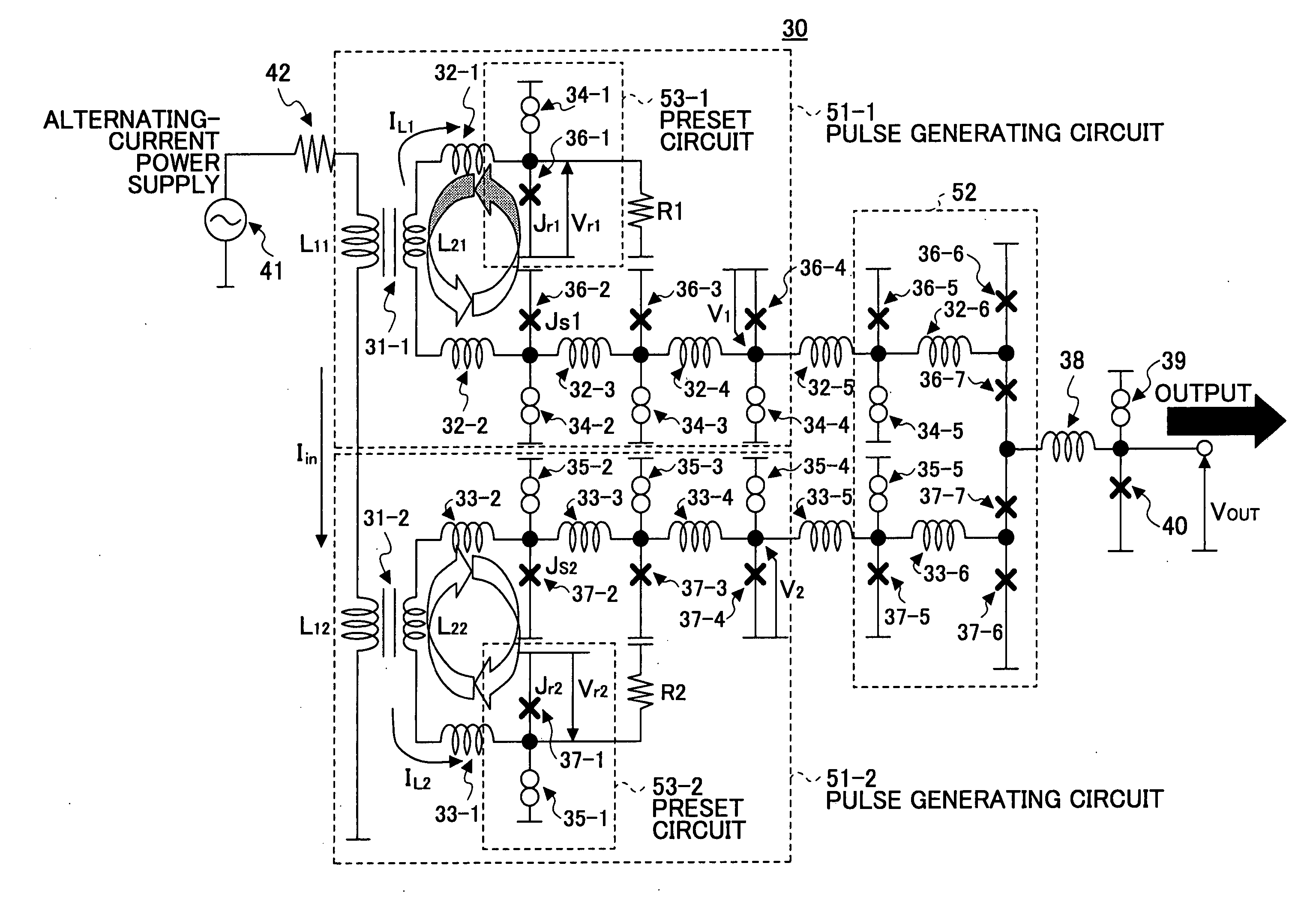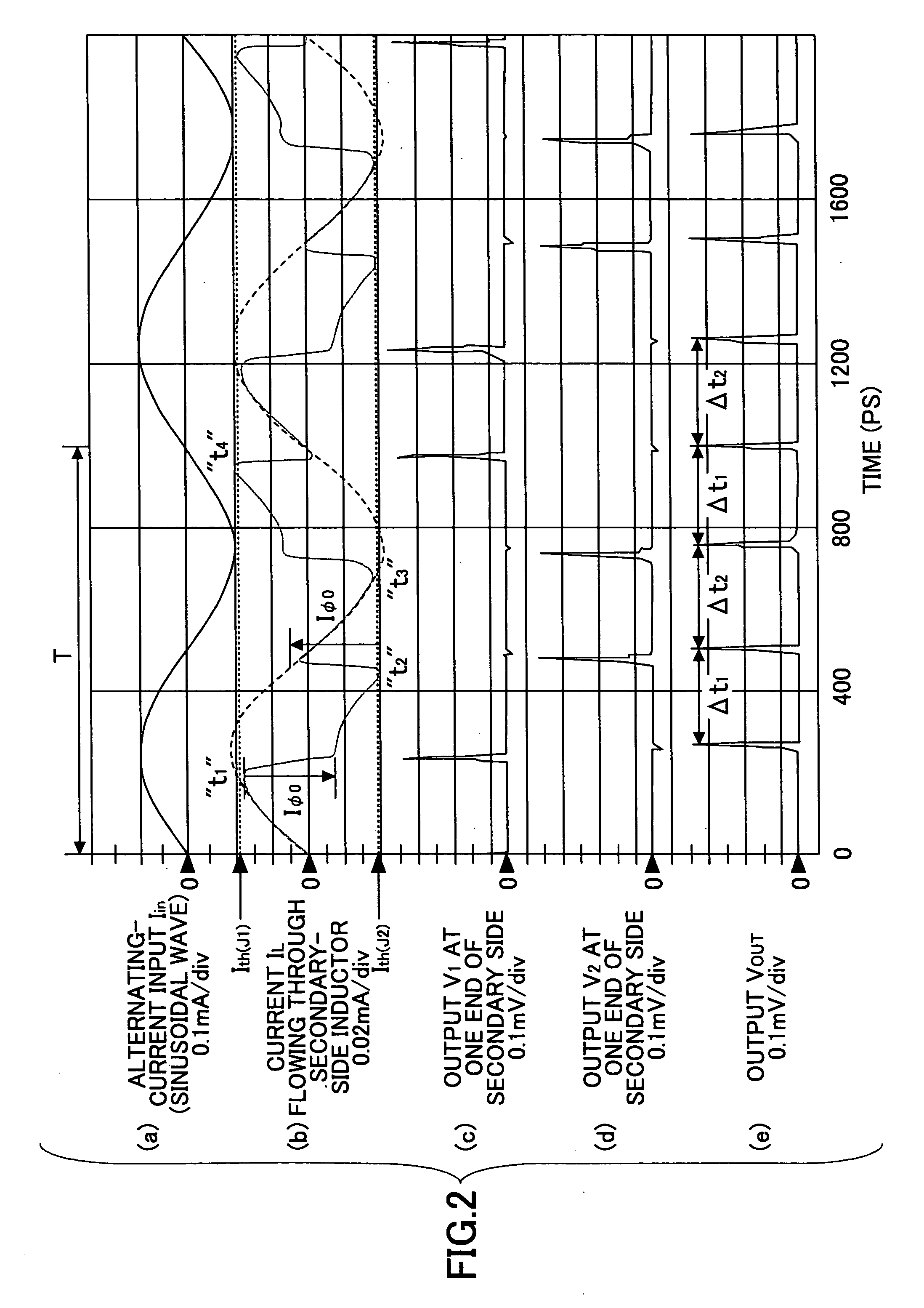Superconducting circuit for generating pulse signal
a superconducting circuit and pulse signal technology, applied in pulse generators, pulse manipulation, pulse techniques, etc., can solve the problems of high precision, high difficulty in providing delay, and difficult high-frequency signal propagation through such signal lines, and achieve small jitter and high precision.
- Summary
- Abstract
- Description
- Claims
- Application Information
AI Technical Summary
Benefits of technology
Problems solved by technology
Method used
Image
Examples
Embodiment Construction
[0043] In the following, embodiments of the present invention will be described with reference to the accompanying drawings.
[0044]FIG. 3 is a drawing showing the configuration of an embodiment of a clock generating circuit according to the present invention. A clock generating circuit 30 shown in FIG. 3 includes a transformer circuit 31-1, a transformer circuit 31-2, inductors 32-1 through 32-6, inductors 33-1 through 33-6, bias-purpose current sources 34-1 through 34-5, bias-purpose current sources 35-1 through 35-5, Josephson junctions 36-1 through 36-7, Josephson junctions 37-1 through 37-7, a resistor R1, a resistor R2, an inductor 38, a bias-purpose current source 39, and a Josephson junction 40. The primary-side inductor L11 of the transformer circuit 31-1 and the primary-side inductor L12 of the transformer circuit 31-2 receive a sinusoidal electric current Iin from an alternating-current power supply 41 through a resistor 42.
[0045] The transformer circuit 31-1, the inducto...
PUM
 Login to View More
Login to View More Abstract
Description
Claims
Application Information
 Login to View More
Login to View More - R&D
- Intellectual Property
- Life Sciences
- Materials
- Tech Scout
- Unparalleled Data Quality
- Higher Quality Content
- 60% Fewer Hallucinations
Browse by: Latest US Patents, China's latest patents, Technical Efficacy Thesaurus, Application Domain, Technology Topic, Popular Technical Reports.
© 2025 PatSnap. All rights reserved.Legal|Privacy policy|Modern Slavery Act Transparency Statement|Sitemap|About US| Contact US: help@patsnap.com



